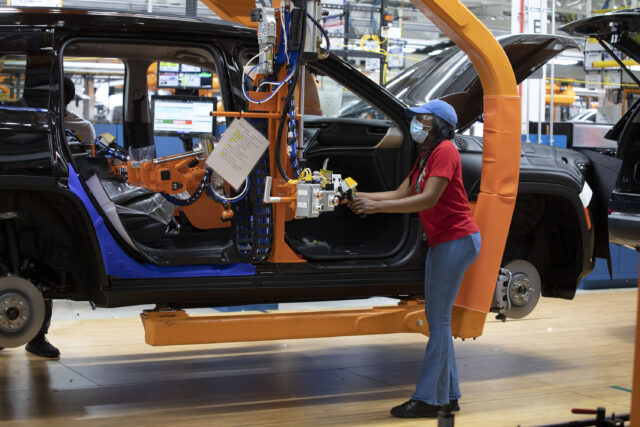U.S. workers got a bit more done in the third quarter of the year—but not as much as expected.
Productivity—the measure of how much output in goods and services workers produce in an hour—rose in the third quarter for the first time this year. In the first half of the year, productivity plunged at the fastest pace in records going back to 1947.
The Bureau of Labor Statistics said Thursday that productivity rose at a 0.3 percent annual rate in the quarter covering July through September. Compared with a year ago, however, productivity is still down 1.4 percent. That’s an improvement from the 2.1 percent 12-month drop recorded in the second quarter.
Economists had expected a stronger rebound. The consensus forecast was for a 0.5 percent increase.
Output rose 2.8 percent in the third quarter. Hours worked rose 2.4 percent.
Economists are not sure what has weighed down productivity. Productivity often slumps when employment rises as new workers are brought into jobs. Similarly, productivity typically rises at the start of downturns as employers shed less productive employees and positions.
The slump in productivity has fueled talk of “quiet quitting,” employees remaining in their jobs while doing less work. More likely, however, the incredibly high job turnover rate may be dampening productivity. That is, the rate of employees quitting to find new work has been elevated and people switching jobs have received much higher wage gains than those remaining in jobs. Integrating the new employees may be hurting productivity. So not quiet quitting as much as regular old quitting.
Unit-labor costs, a key measure of wages, rose at an annual pace of 3.5 percent, a sharp downward move from the 8.9 percent recorded in the prior quarter. This is a measure of how much employers need to spend on labor to produce a given unit of output. The slowdown in the gain could provide some comfort to Federal Reserve officials worried about wages fueling inflation.
Year-over-year, however, unit labor costs are up 13.9 percent. They were down 11.9 percent in the second quarter.

COMMENTS
Please let us know if you're having issues with commenting.